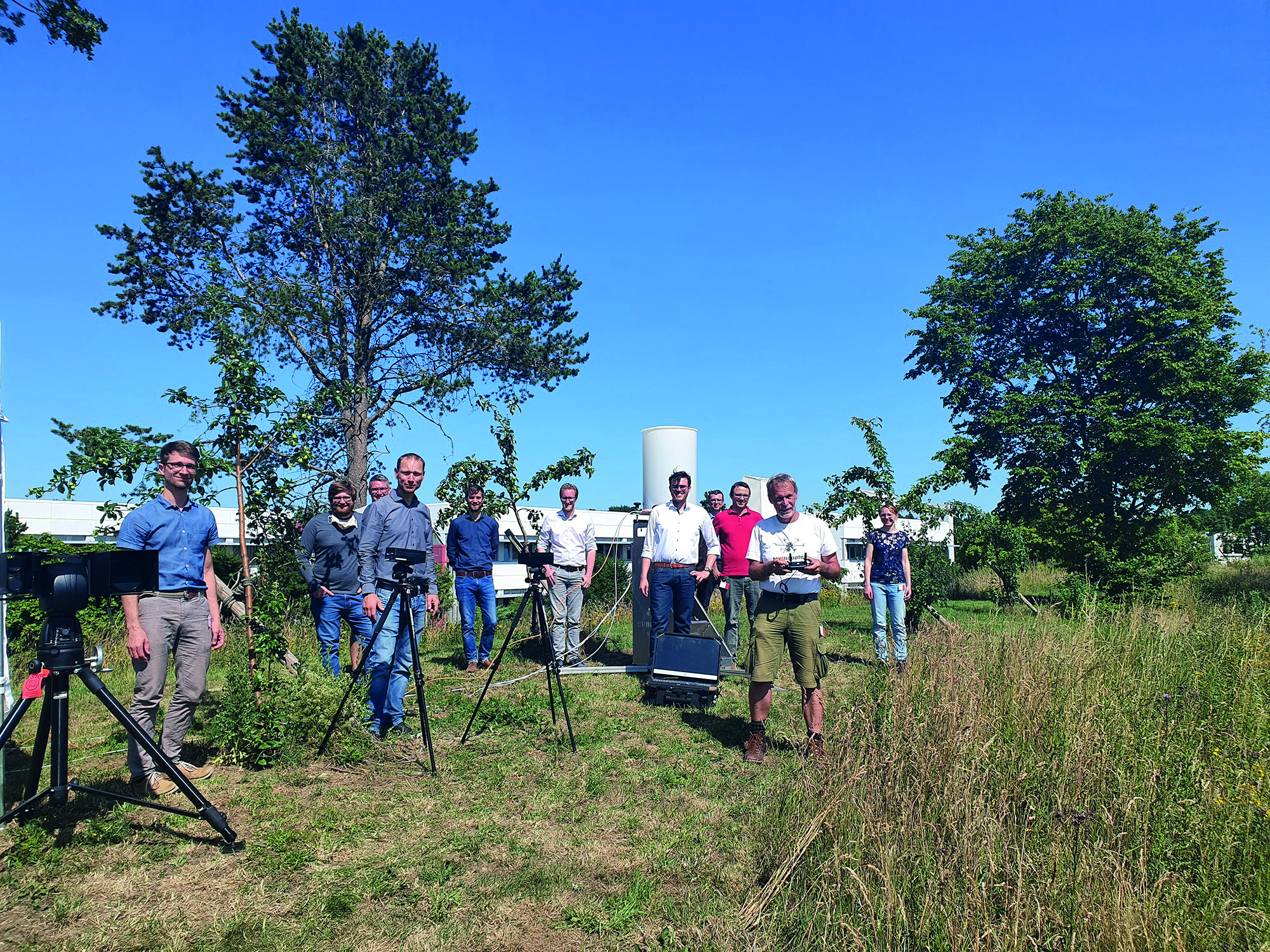Drone in flight?
If a child is playing with a small drone in the back yard, this is not a problem. However, at political rallies or sporting events, the situation is different. In such cases, an oncoming drone can signal serious danger. The ORAS system reliably detects drones on approach, even if they are approaching through urban canyons. The system's capabilities won onlookers over during its final presentation.
Unless appropriate security measures are in place, political demonstrations can easily get out of hand, and political rallies and sporting events also need to be secured as well as possible. Emergency forces have to keep an eye not only on the people in the area, but increasingly on the airspace also. This is because a drone could approach, for example, in order to disrupt political events or to display a banner or flag without authorization at sporting events. Fraunhofer FHR and various partners have therefore joined forces in the ORAS project to develop a radar-based system for emergency services that immediately detects drones.
Successful final presentation
The system managed to show what it is made of during the final presentation. This was originally planned for April 2020 in Moosbach, but due to pandemic restrictions it had to be relocated to the Fraunhofer FHR site and rescheduled to June 2020. To minimize the number of on-site attendees, the presentation was livestreamed to partners and potential end users. Fence radars were positioned on the site fence; the camera system and the dome radar were set up 200 meters further away. Controlled from outside, a drone performed agile flight maneuvers over the FHR site: It zigzagged, flew up and down, moved close, then away again. In a first scenario, it flew over the fence radar and onto the site – equivalent to flying in through a canyon of houses. In a second scenario, it approached at a higher altitude and was first detected by the dome radar, this corresponds to flying above the roofs of houses. In both scenarios, the camera panned to the drone. The test run was successful: The system's various applications were vividly demonstrated.
In addition to the final presentation, three other BMBF-funded projects with the same goal were presented alongside ORAS in Moosbach in October. In the decommissioned barracks, ORAS was able to optimally demonstrate its strengths – for example, when flying a drone through a canyon of houses below the edge of the roof. The potential users from BOS and industry gave ORAS a positive report card, which is why FHR is striving to further develop the system with a view to commercialization.
